The Aviation Welding Technicians are tradesmen who will:
- be thoroughly familiar with safety requirements and practice safe work habits;
- set up, operate, and maintain all welding equipment;
- have dexterity, co-ordination and patience to develop the skills required of proficient welding technicians; and
- remain current with welding technology and welding standards established by the CCAA.
This Occupational Standard lists all the tasks which an Aviation Welding Technician should be able to perform. However, the minimum standard for each process is determined by equipment availability and job requirements in different parts of the country.
Rather than list job documentation and material preparation in detail for each welding process, these are listed as separate tasks. For example, Task 1 provides information on safe work practices and techniques. Task 2 describes how a technician uses reference material, interprets blueprints, and documents work completed. Task 15 deals with supplementary and disassembly procedures performed by an Aviation Welding Technician. Portions of these tasks will pertain to all duties performed by an Aviation Welding Technician.
Certification Requirements
To qualify for certification with CCAA, the applicant must possess the necessary knowledge and skills and have acquired a minimum of sixty (60) months in the occupation, or a provincial or inter-provincial welding certificate with at least twenty-four (24) months experience in aviation welding. Certificate holders will be required to send in a copy of their certificate with their application.
The tasks in the logbook were made as generic as possible to accommodate the largest amount of work environments and equipment / tools but do not necessarily cover all tasks performed by individuals. CCAA will apply credit for completion of a CCAA accredited Aviation Welding Technician course, as part of the minimum sixty (60) months, on a month to month basis.
Tasks Common to Most Aviation Welding Technicians
(note that sub-tasks for each task are not shown below)
Block A — Safety and Safe Work Practices
Task 1 – Demonstrates Safe Working Practices and Techniques
Block B — Documentation and Information for Repair and Fabrication
Task 2 – Uses Reference Material, Interprets Blueprints and Documents Work Completed
Task 3 – Identifies Metals and Metal Characteristics
Task 4 – Performs Pre-Welding Duties
Block C — Electric Arc Processes and Resistance Welding
Task 5 – Welds Using Gas Tungsten Arc Welding Process
Task 6 – Welds Using Plasma Arc Process
Task 7 – Cuts Using Plasma Arc Process
Task 8 – Sets Up Equipment and Welds Using Resistance Welding Process
Task 9 – Sets Up Equipment and Welds Using Gas Metal Arc Welding Process
Task 10 – Welds Using Shielded Metal Arc Welding Process
Block D — Oxy-Fuel / Oxy-Acetylene Setting Up, Cutting, Welding and Brazing Procedures
Task 11 – Follows Recommended Setting Up Procedure for Installing Oxy-Fuel / Oxy-Acetylene Accessories
Task 12 – Brazes and Braze Welds Using Manual Oxy-Acetylene Process
Task 13 – Fusion Welds Using Manual Oxy-Acetylene Process
Task 14 – Joins Metals Using Soldering Process
Task 15 – Cuts, Shapes and Fits Steel Using Oxy-Fuel Process
Task 16 – Performs Supplementary and Disassembly Procedures
Block E — Welding of Primary Tubular Structures
Task 17 – Assesses Damage to Tubes
Task 18 – Prepares Damages Structures for Repair
Task 19 – Welds in Repair
